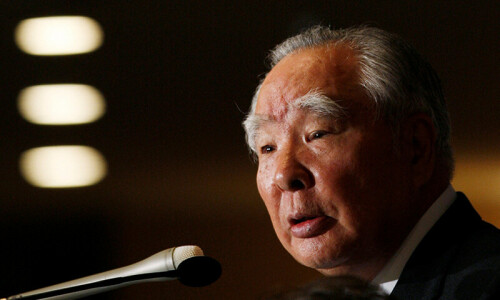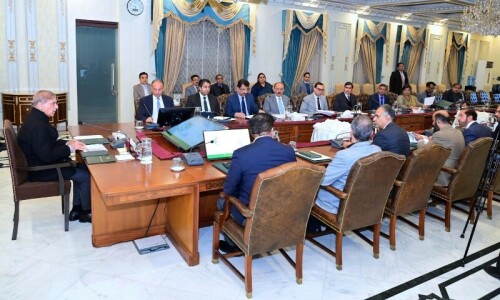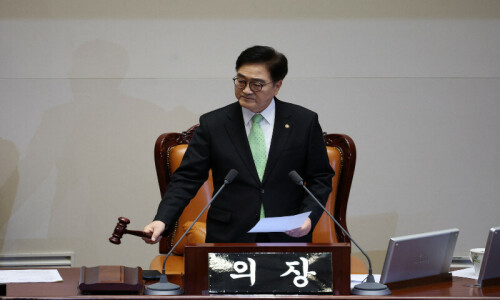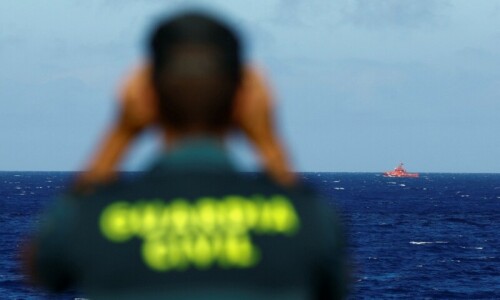This piece was originally published on Dec 19, 2016.
I reached Abbottabad at 5pm to pick up my mother from the Daewoo Express bus station. She was coming from Peshawar, where she had landed earlier in the day on the same aircraft that crashed on its way to Islamabad from Chitral.
Panic struck me as I looked at the TV screen flashing the news of the missing PIA plane.
Minutes later, Deputy Superintendent of Police Havelian confirmed that the PK-661 had crashed in Havelian.
Immediately, I thought to myself, “Oh my God, my mother was also on board the same plane today!”
I was overtaken by a sense of urgency to help. I thought of going to the crash site to douse the flames, look for survivors and rescue them.
I called my colleague Additional Assistant Commissioner Abbas Shah Bukhari who was near the crash site, and he advised me to go to the Civil Hospital Havelian to make arrangements for the victims.
As I reached, I was informed that an emergency had already been declared at the hospital and that the medical staff was on standby.

I requested a hospital employee to take me to the crash site. We drove up on irregular tracks but after 20 minutes, we had to get off the jeep and continue on foot as there was no other way to reach the place.
We came across army soldiers who were already on their way. A senior officer was instructing them on how to mount the rescue operation.
Deputy Commissioner Mansehra had also dispatched Volunteer Task Force teams and ambulances to the site instantly and regularly asked if further help was needed.
It was dusk when we reached, and the scene was chaotic.

The plane had crashed on a steep hill and the fire had engulfed almost the entire 450 square feet area.
There was a big crowd who had gathered there, many of them army soldiers.
I smelt burning flesh. I saw rescuers recovering body parts from the debris, reciting the kalma as they did so.
People were using chadors and dupattas they had brought from home to cover the body parts. They served as gloves for protection from the burning hot human flesh as they lifted the body parts.
The bodies were charred beyond recognition.
It is unfortunate we are so ill-equipped to manage such situations. I saw army helicopters hovering above the crash site, but there was no aerial drop of fire extinguishers.
Gun-toting soldiers had taken control of the place but there was no proper lighting arrangement.
There was no generator to light any electric bulbs. Instead, hand-held torches had to be used.
We lost the battle very soon and our search for survivors came to a painful end.
We then went to the hospital where the body remains were being transferred.
By the time we reached, there was already a team of more than 15 doctors busy identifying the victims.
It was a huge challenge for the medical staff. A team from NADRA was also present to help.
Deputy Commissioner Abbottabad, Captain Jahanzeb Haider, Assistant Commissioner Abbottabad, Dr. Jahanzeb, and Assistant Commissioner Mansehra, Naveed Ahmad supervised the identification process.
Colleagues and friends of Deputy Commissioner Chitral, who was one of the victims, thronged into the mortuary. Officials from the Hazara division were also present. District Nazim Chitral stayed on in the hospital for hours.

By 3pm, the remains of only three passengers were identified. The doctors announced that no more bodies could be identified and that they would be shifted to PIMS Islamabad for DNA testing the next day.
However, before they could be taken to Islamabad, Chief Minister Pervez Khattak demanded not to transfer the bodies before he reached the hospital at 11am. But he did not arrive on time and almost three agonising hours were wasted.
After the long wait, PPP's Members of Provincial Assembly from Chitral decided to shoulder the coffins to the ambulances and send them on their way to the federal capital.
I pray that all the departed souls rest in eternal peace.
What can the PIA do to make its flights safer? Write to us at blog@dawn.com
















































